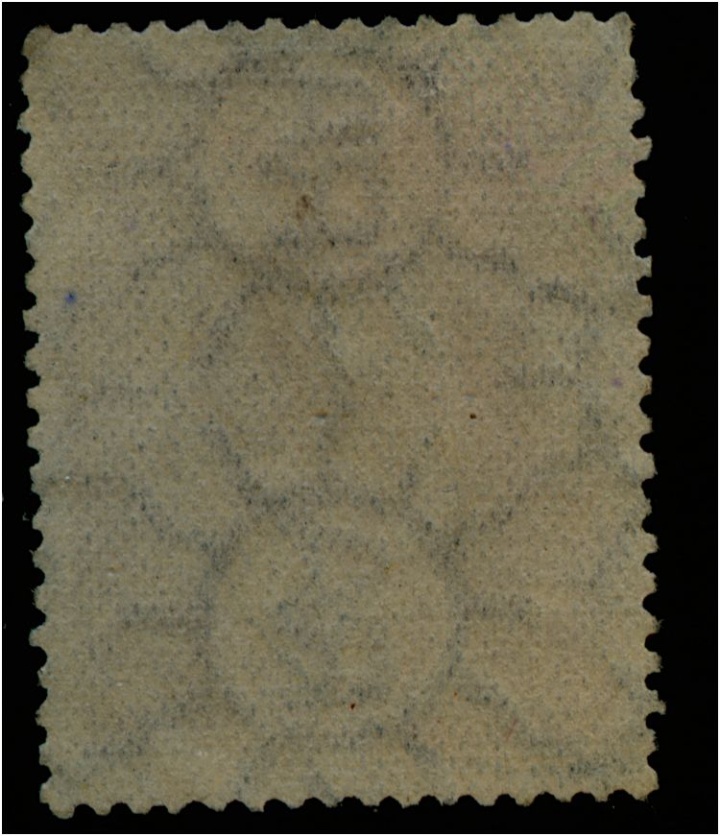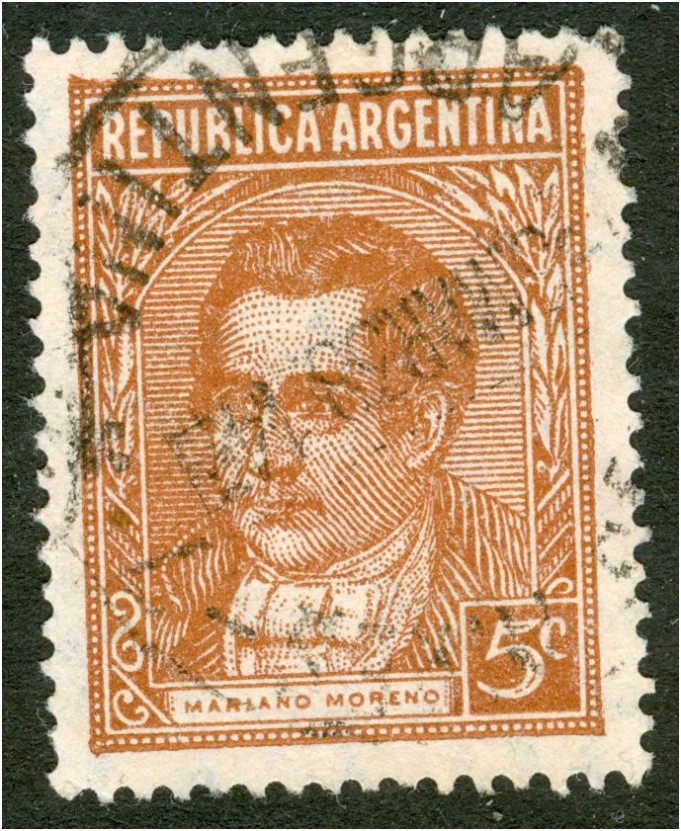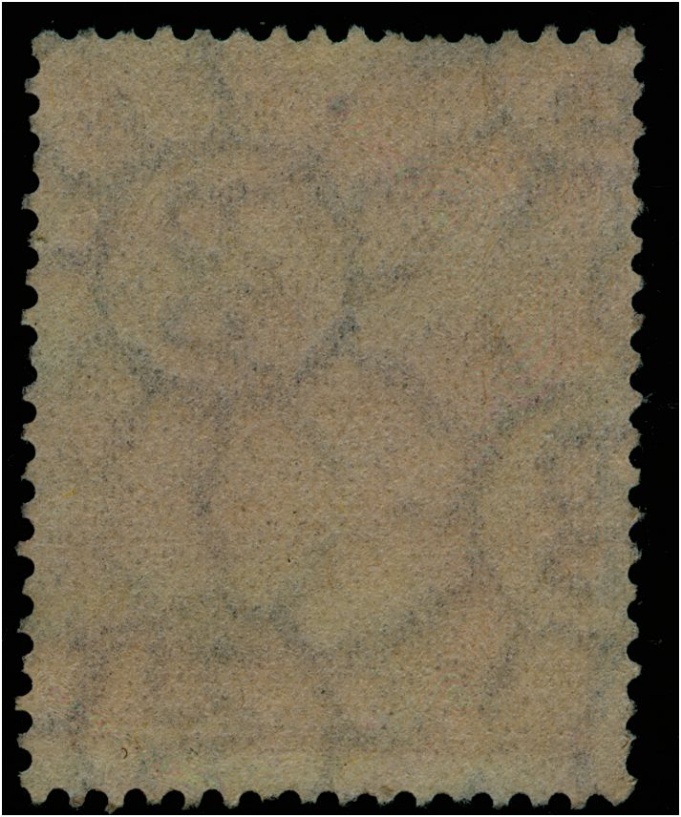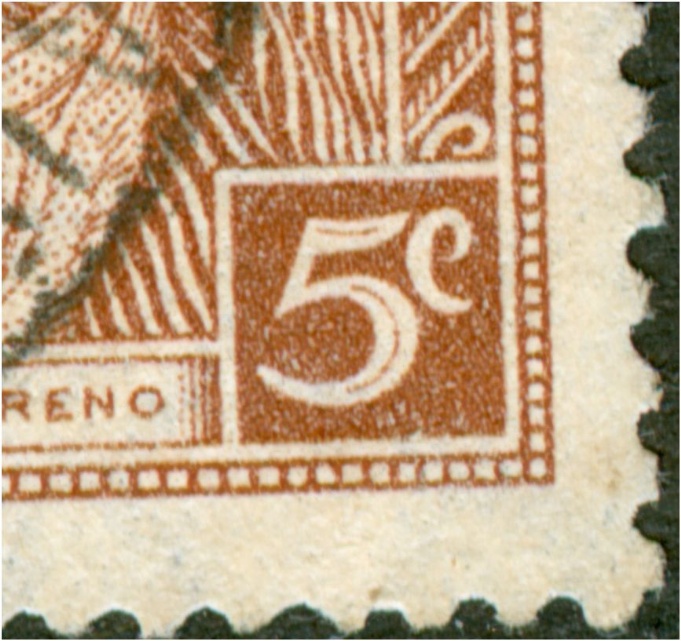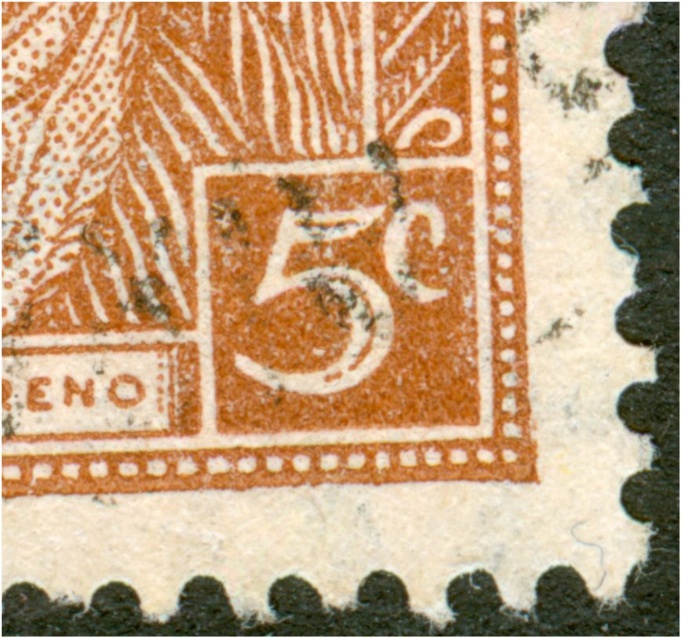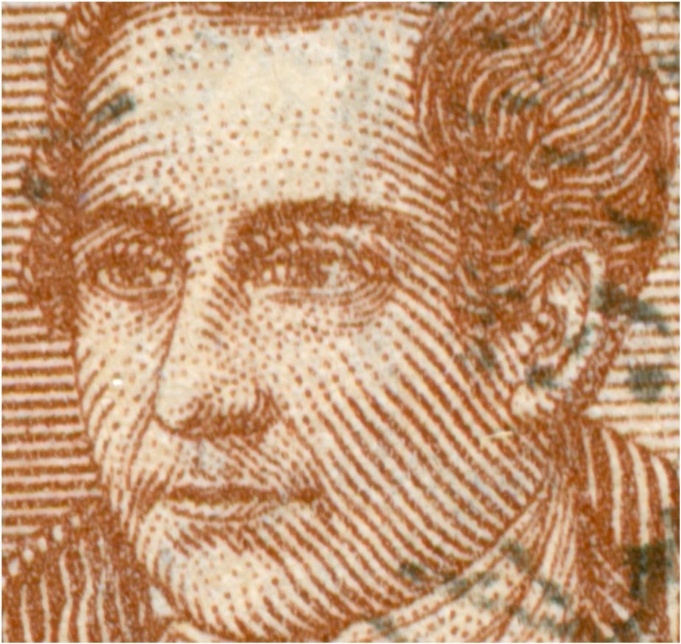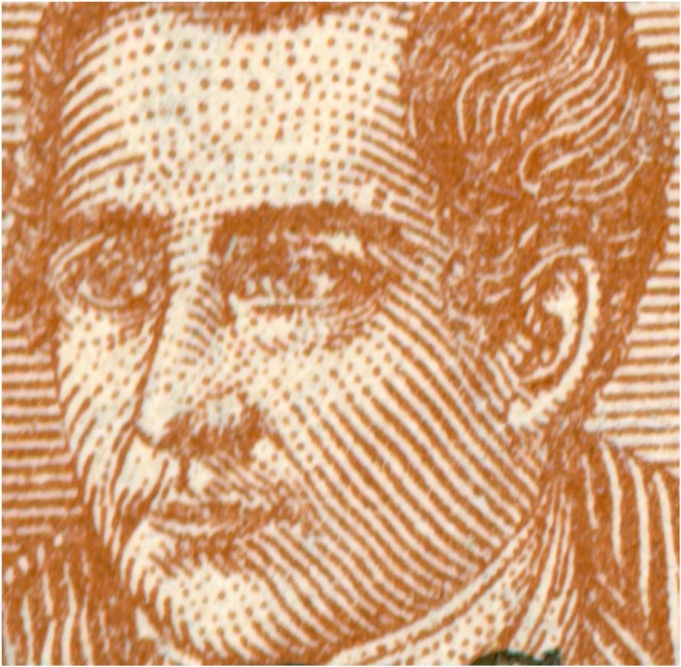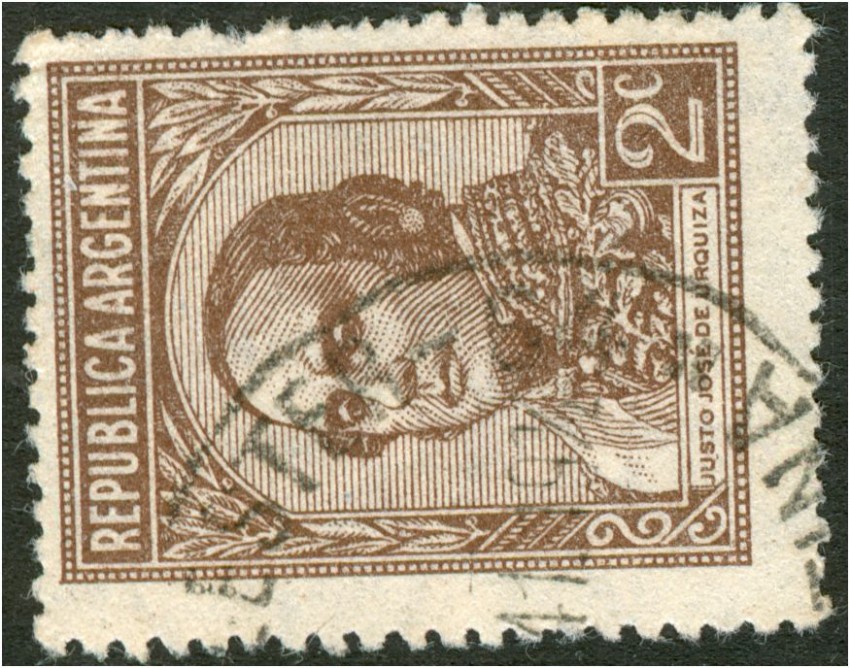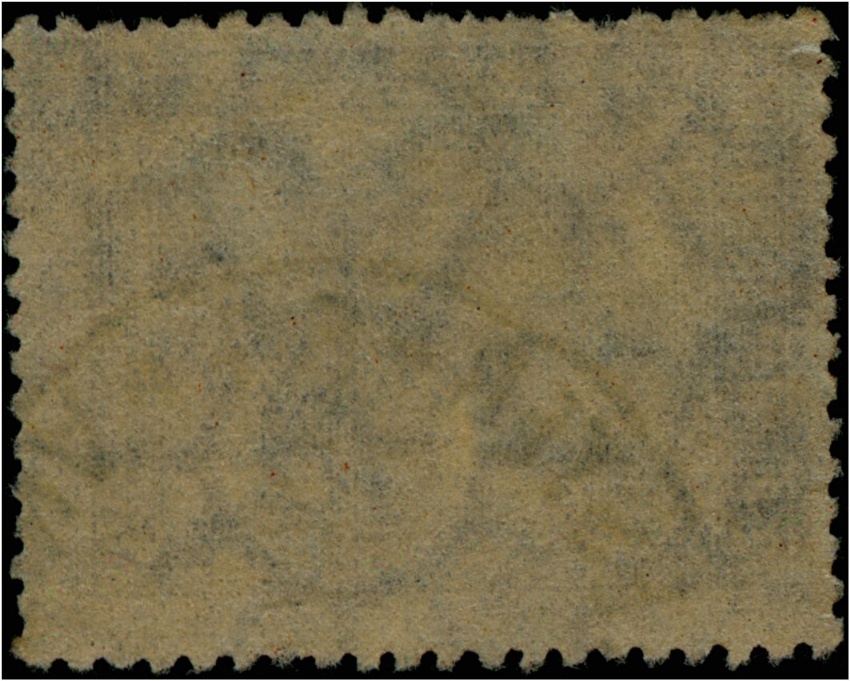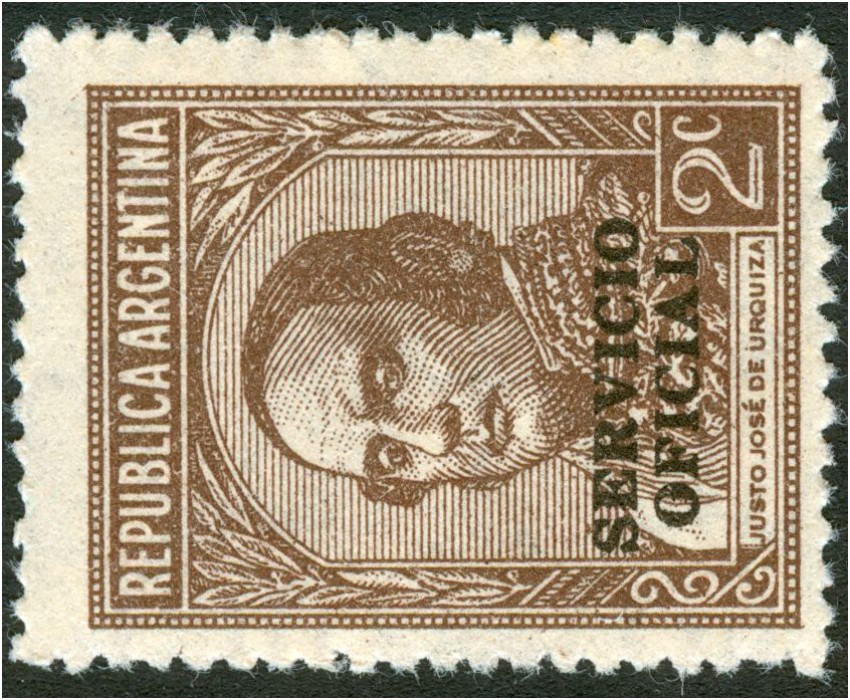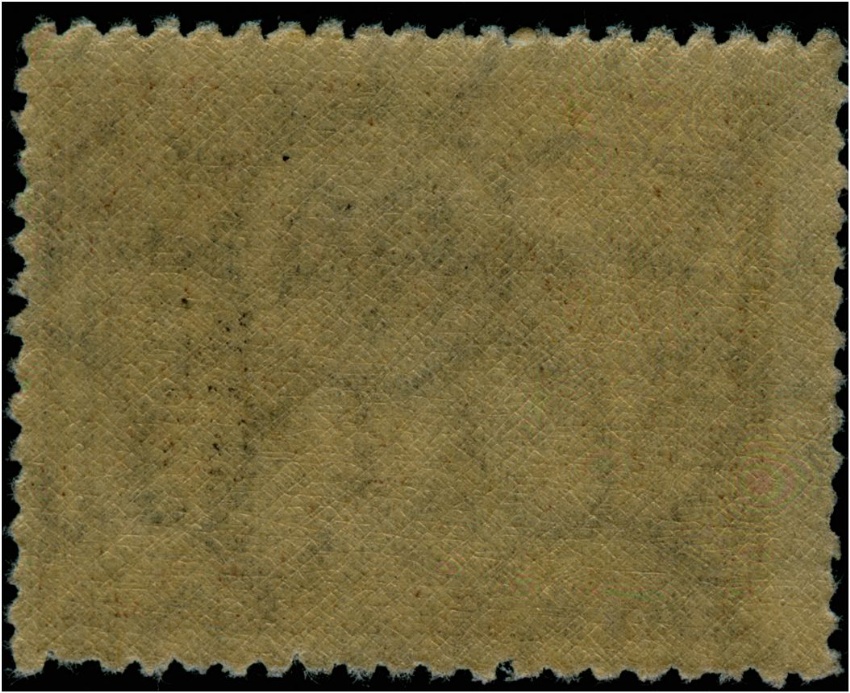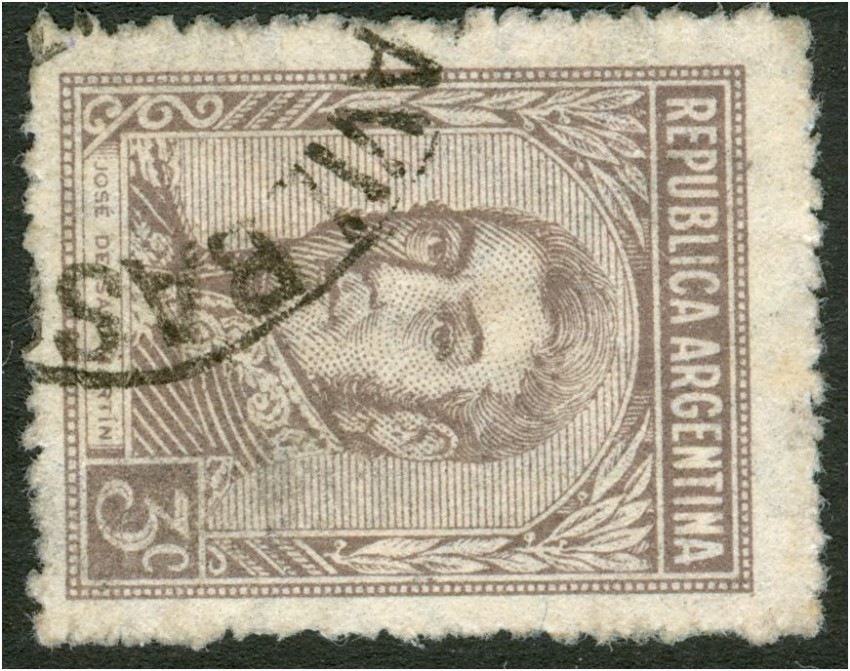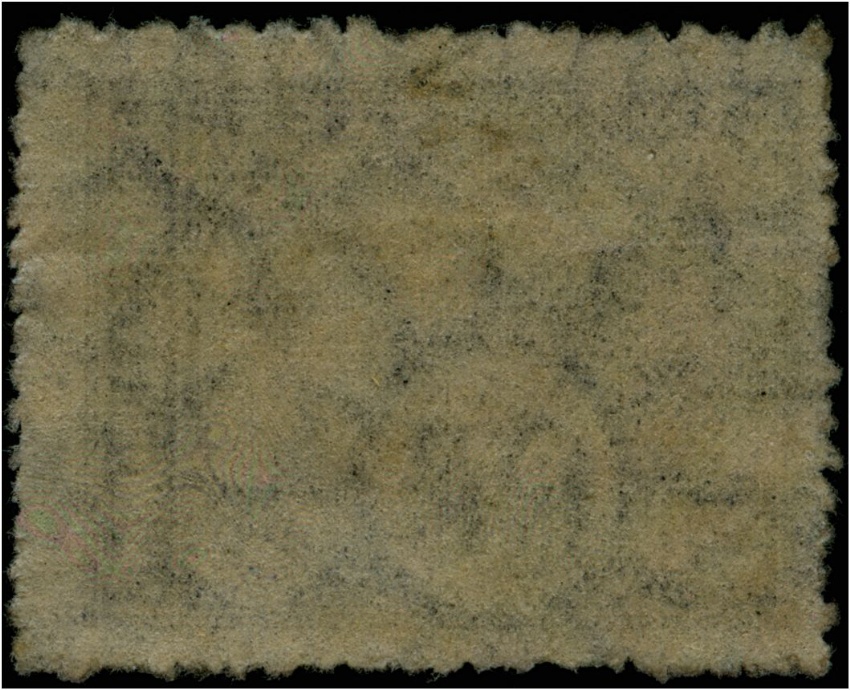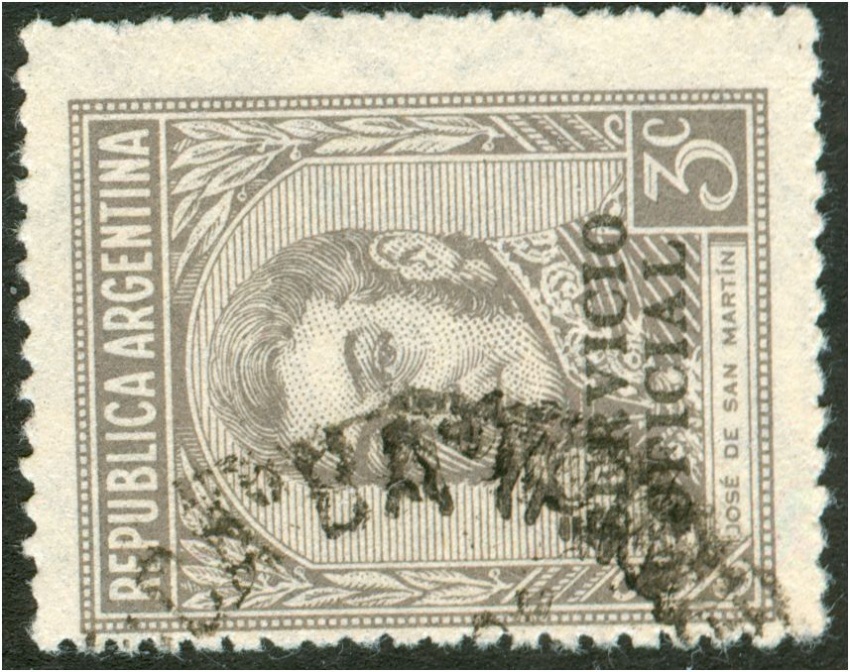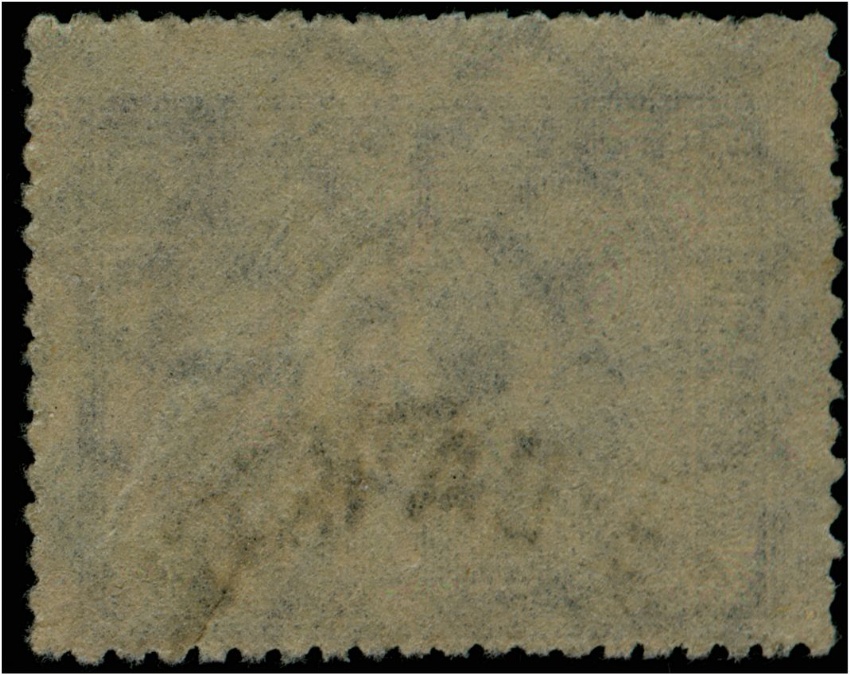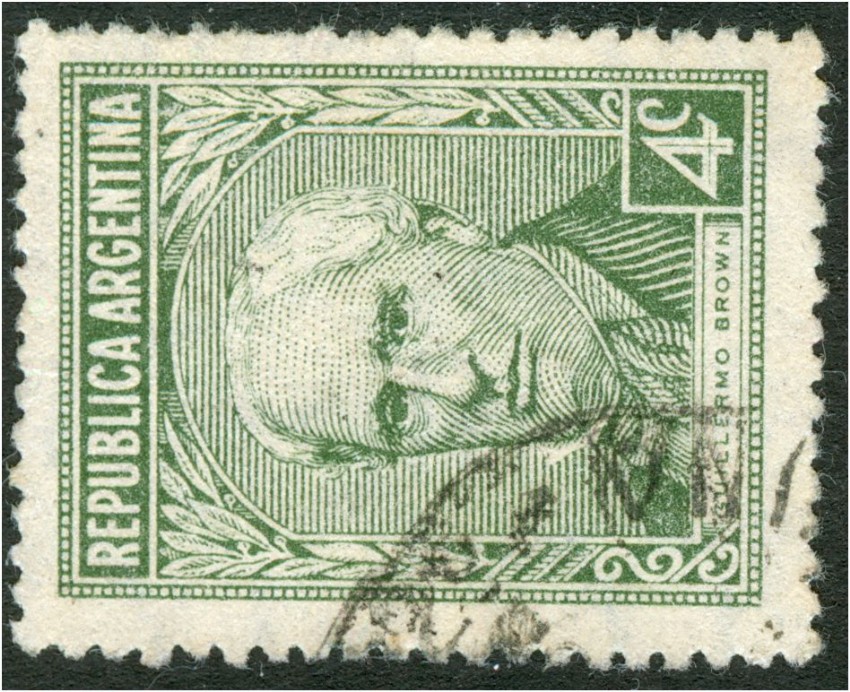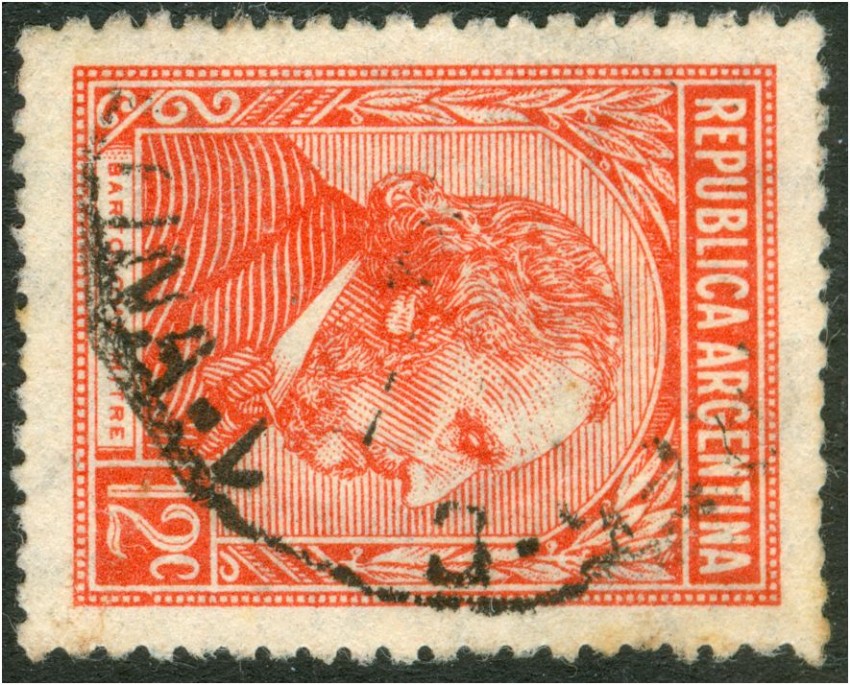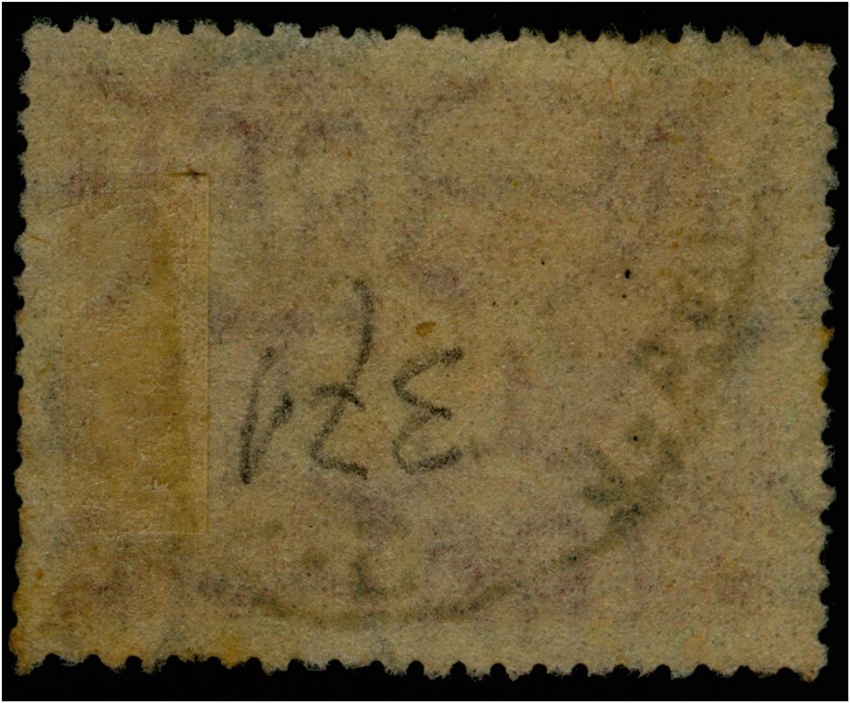1940 typography on paper with an orthogonal watermark. All earlier 5c stamps without coating had been printed on paper with a parallel watermark. According to Dario A. Bardi - who does mention the parallel watermarkin typography in his overall table - an uncoated paper had been used that shows some shiny spots and is referred to by Bardi as "mate lustroso". I do not have a mint copy but indeed in the used copies you may see some remnants of a varnish [barnizado]. What is more important is that the watermark is orthogonal with a vertical direction of paper so the line of AR is horizontal instead of vertical as in the case of the parallel watermark :
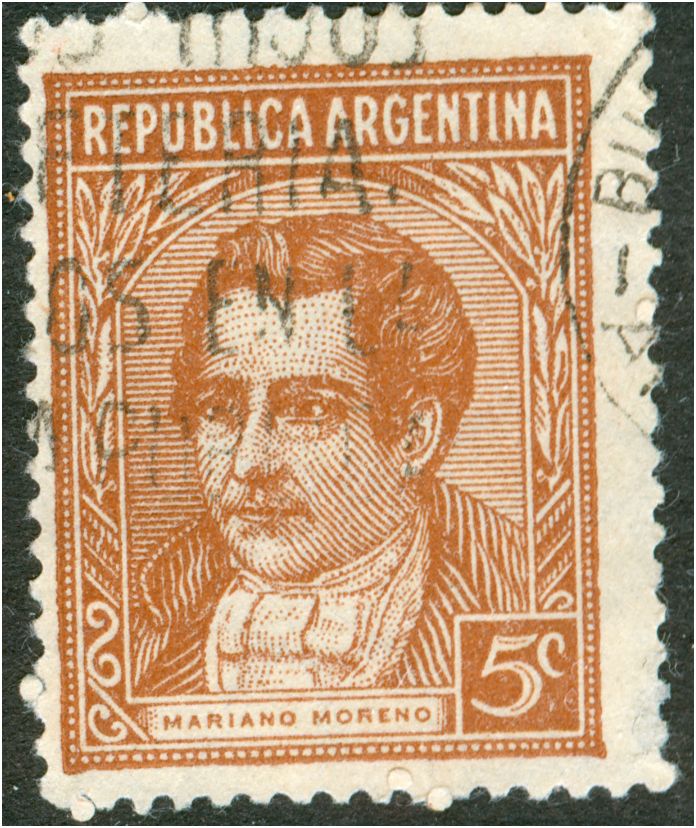
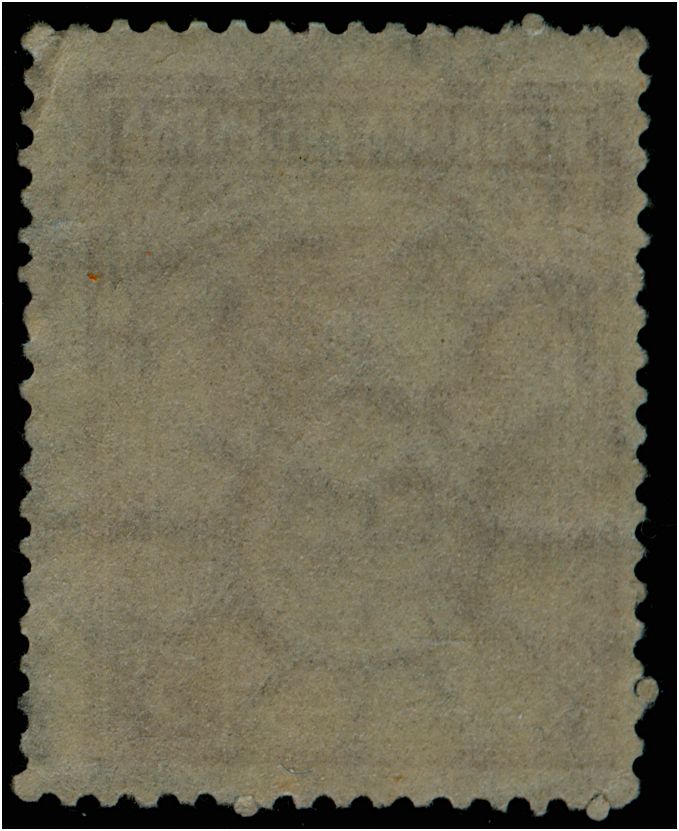
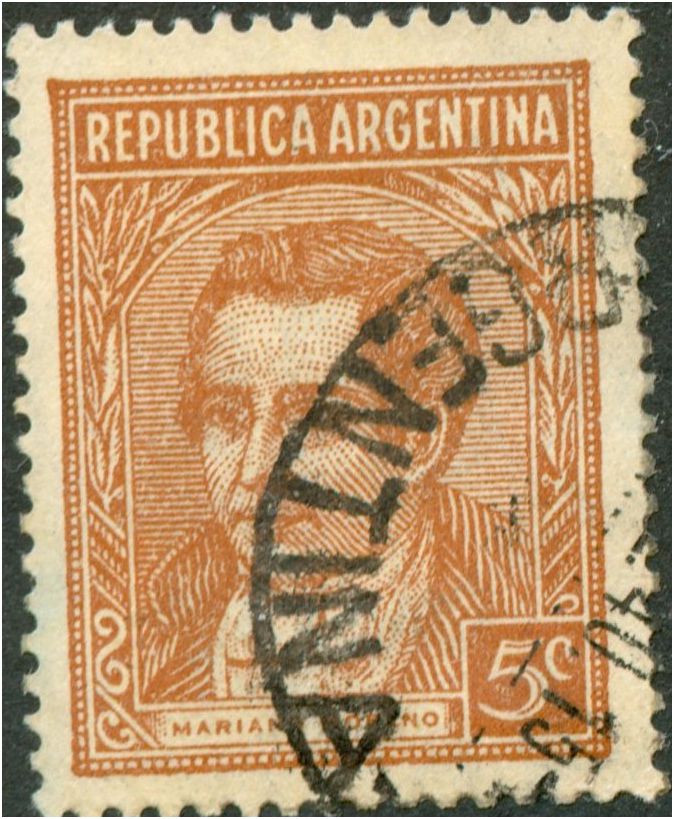
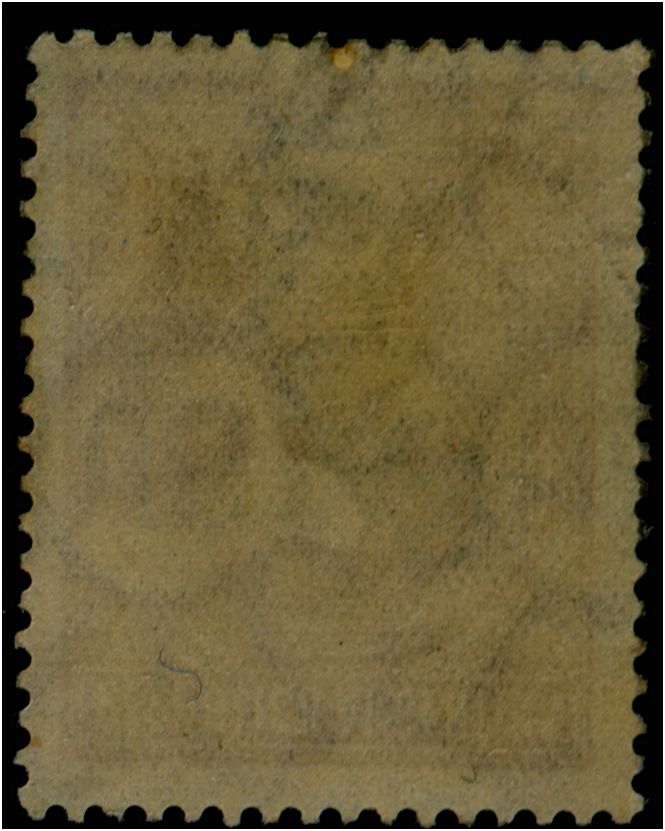
Also according to mr. Bardi these stamps are the only imported papers with the transposed watermarks [filgranas traspuestas]. What is meant here is that the back of the stamp has the felt side of the paper and the front has the wire side. You can establish that yourself by closely looking at the surface of the back. It is very smooth as in most cases of the unwatermarked stamps [the "difusos" versus the "nitidos"].
The later watermarks that stem from the local paper mills have transposed watermarks predominantly! Practicallly everything from 1953 onwards has "traspuestas"!
The consequence of this all - and I haven't read that at Bardi's - is that the watermark has AR on the dandy-roll instead of RA!!!!!
So generically we have the following watermarks:
1935 -parallel - RA on circumference of the dandy roll - equilateral triangle
1937 - orthogonal - RA along the axis of the dandy -roll - equilateral triangle
1940, 1953/57 - orthogonal - AЯ along the axis of the dandy-roll - equilateral triangle
1948 - orthogonal - RA along the axis of the dandy-roll - isoceles triangle - better known as "rayos rectos" or "rayos largos"
All 4 generical groups can be split up in sub-groups by measuring the diameters of the sun, the length of the rays, the other properties of the paper [wire, transposition, symmetry, UV-reaction, etc.].


































